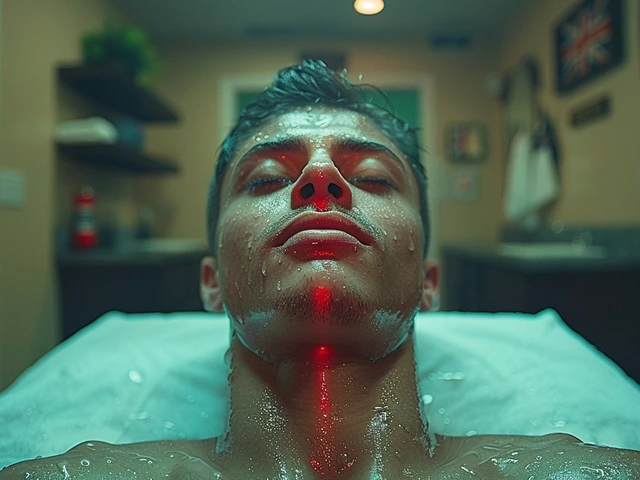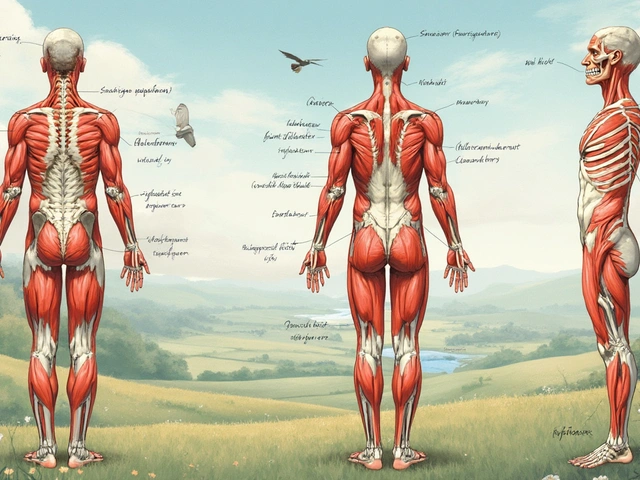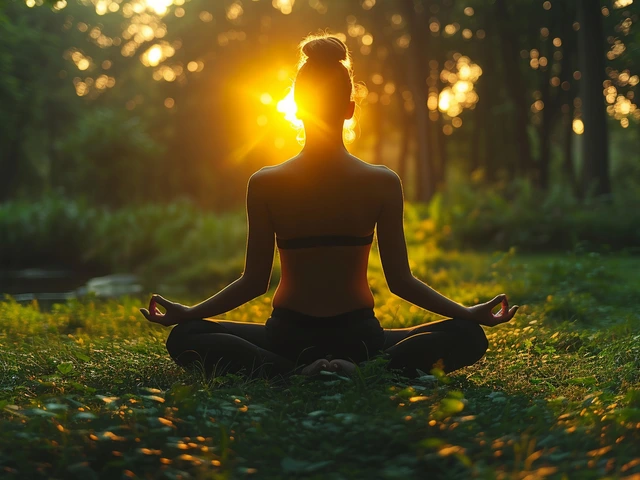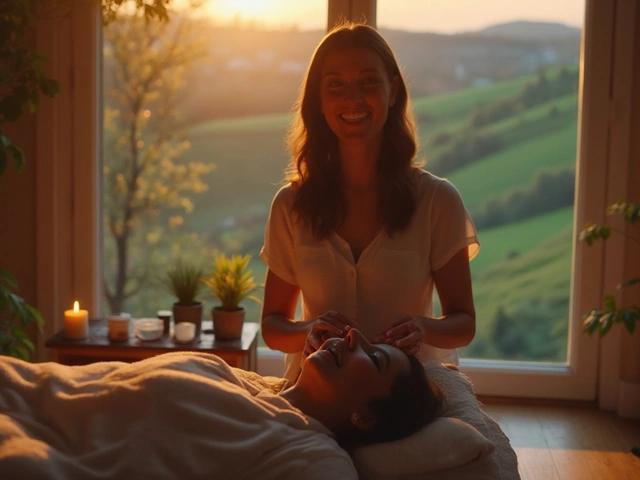Why Chair Massage Works: The Best Midday Pick‑Me‑Up for Energy and Focus
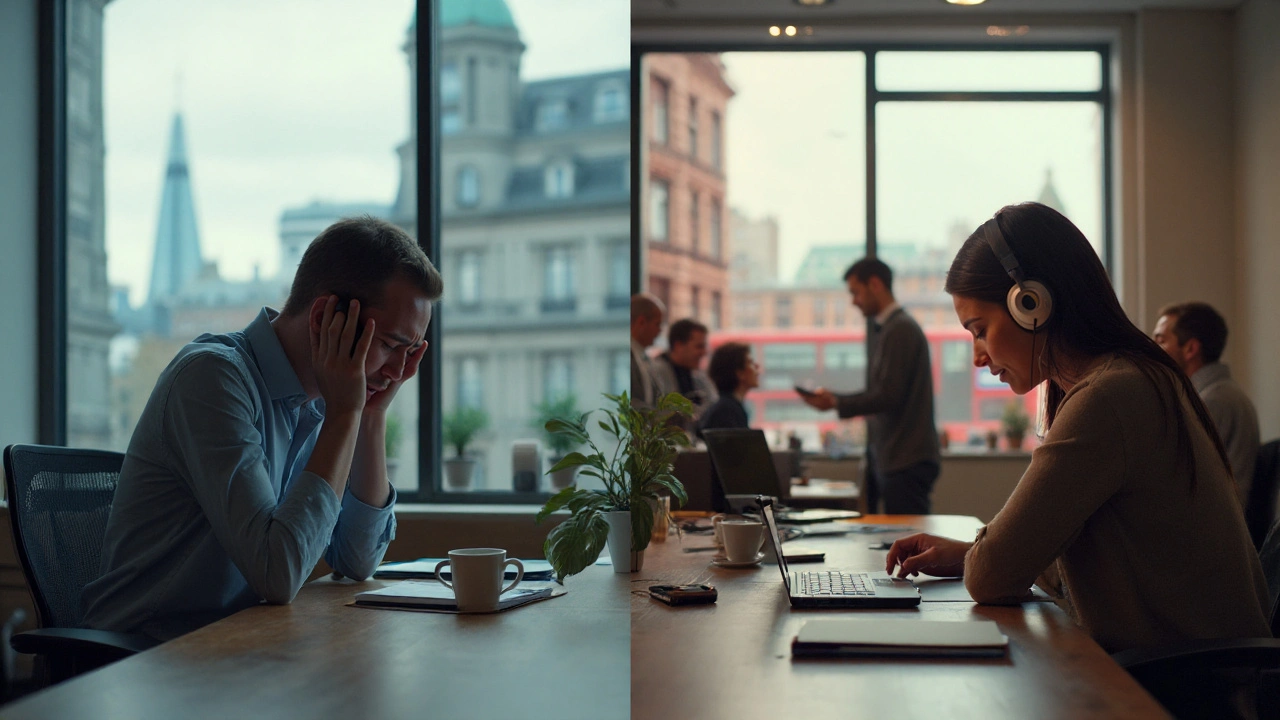
You hit that 2 p.m. wall. Coffee helps for a minute, then the jitters kick in and your neck still feels like concrete. Here’s a smarter play: chair massage. Ten minutes, clothes on, and your brain feels sharper while your shoulders finally drop. This isn’t wishful thinking. There’s solid science behind why short, targeted touch ramps up alertness, eases pain, and resets your nervous system-fast.
- TL;DR: A 10-15 minute chair massage increases alertness and reduces muscle tension and stress markers. It’s a quick reset with fewer downsides than caffeine.
- Why it works: It calms your fight‑or‑flight response, improves blood flow, and loosens the neck/shoulder/forearm knots that drain focus.
- How to use it: Book a therapist for 10-20 minutes, or run a five‑minute self sequence at your desk. Aim before or early after lunch.
- What it costs: In Australia, expect about AUD $15-$30 for 10-20 minutes in kiosks; corporate onsite rates are typically AUD $70-$110 per therapist hour.
- Safety first: Skip if you have a fever, DVT, a new injury, or skin infection. Check with your GP if you’re pregnant or managing a medical condition.
Why a 10-15 minute chair massage beats the midday slump
That afternoon dip isn’t laziness. It’s biology. Your circadian rhythm naturally drops in the early afternoon, especially if you’ve been sitting still, staring at screens, and holding your breath over tight deadlines. Add a heavy lunch and poor posture and you’ve got a perfect storm: tense traps, stiff neck, sore forearms, and a brain running on fumes.
Chair massage targets exactly what the desk day messes up. It’s clothes‑on, oil‑free, and focuses on the places that make you feel tired and cranky: neck, shoulders, upper back, forearms, and hands. Therapists use compressions, kneading, and gentle stretching. You sit in a supportive face cradle, relax the jaw, and your system gets the memo: you’re safe to downshift.
There’s real evidence this works quickly. A small but famous study in the International Journal of Neuroscience (1996, Field and colleagues) found that a 15‑minute seated massage increased EEG beta waves linked to alertness and improved math performance immediately after the session. Bigger picture, massage has consistent effects on stress and pain. A 2011 meta‑analysis of randomized trials (Moyer et al., PLOS ONE) reported small‑to‑moderate reductions in anxiety and pain across different types of massage. The U.S. National Center for Complementary and Integrative Health notes massage can help with stress and musculoskeletal discomfort. The American College of Physicians includes massage as an option for acute and subacute low back pain in its clinical guideline.
What’s happening under the hood? Touch is a fast lane to your nervous system. Firm, rhythmic pressure stimulates skin receptors that signal safety, nudging your body from fight‑or‑flight into rest‑and‑digest. You’ll often see small drops in heart rate and blood pressure and a rise in heart rate variability-markers of a calmer, more flexible stress response. Locally, muscles get more blood flow and warmth. That takes load off your neck and upper back, which frees up energy your brain was burning just to brace against pain.
Compare that to coffee. Caffeine can be a friend, but it’s a blunt tool: quick boost, potential crash. Its half‑life is roughly 5-6 hours, so a 2 p.m. long black can still be in your system at 8 p.m. A controlled study in the Journal of Clinical Sleep Medicine (2013, Drake et al.) showed caffeine taken 6 hours before bedtime measurably reduces sleep quality. Less sleep tonight means a bigger slump tomorrow. Chair massage, by contrast, delivers a lift without hijacking your sleep or spiking your heart.
If you manage a team, there’s an extra angle: reliable productivity. Short, regular sessions lower perceived stress and the ache that quietly kills focus. In Australia, psychosocial risk duties under Safe Work Australia’s model Code of Practice (2022) push employers to control job stressors. Massage isn’t a cure‑all, but as part of a break‑friendly culture it ticks boxes: it reduces muscle strain, models recovery, and shows you take wellbeing seriously.

How to make chair massage your midday ritual (with or without a therapist)
Here’s the practical side: what to expect, how to book, and exactly what to do if you only have five minutes and an office chair.
What a session looks like
- Clothes stay on. No oil needed. You face into a padded cradle with chest and arms supported.
- Focus areas: neck, shoulders, upper back, forearms, hands; sometimes scalp and jaw.
- Pressure: you’re in charge. Speak up if anything pinches or if you prefer lighter/deeper work.
- Timing: 10, 15, or 20 minutes. Ten minutes is a reset; 15-20 minutes lets the therapist cover arms and hands too.
Best timing
- Before lunch or within 60-90 minutes after a light lunch. You’ll avoid that post‑meal fog.
- Avoid right after a heavy, carb‑dense meal. Blood is in your gut, not your shoulders.
- Hydrate before and after. No need to drown yourself-just a glass of water is fine.
Booking tips (Australia‑specific)
- Qualifications: look for a therapist with at least a Certificate IV in Massage Therapy or a Diploma of Remedial Massage and current professional indemnity insurance.
- Rates: for onsite corporate bookings in Perth, the going rate is about AUD $70-$110 per therapist hour with a 2‑hour minimum; that works out to 6-10 staff at 10-15 minutes each. Mall/kiosk chairs are usually $15 for 10 minutes and $25-$30 for 20.
- Payments and rebates: workplace chair massage usually isn’t covered by private health funds. Clinic‑based remedial massage may be, if you’ve got extras cover and a remedial therapist.
- Hygiene: fresh face cradle covers for each person, therapist hand hygiene, and wipe‑down between sessions. If you’re unwell, skip it.
- Tipping: not expected in Australia. A thank‑you and rebook are perfect.
What to tell your therapist
- Any injuries, medical conditions, pregnancy, or areas to avoid.
- Your preferred pressure on a 1-10 scale (aim for 5-7 for a midday pick‑me‑up).
- Your goal: “I want to feel awake,” “kill this neck tension,” or “help my wrist pain.” That guides their sequence.
Five‑minute self‑massage sequence (no tools)
- Reset your seat: sit tall, feet flat, untuck your chin. Take three slow nasal breaths.
- Traps and neck (60-90 seconds): hook right hand over your left shoulder and squeeze/hold tight points for 5 seconds, then release. Work 3-4 spots. Repeat on the other side.
- Scalp and jaw (60 seconds): fingerpad circles across the scalp; then gentle knuckle strokes along the jawline from chin to ear. Drop your tongue from the roof of your mouth.
- Forearms (60-90 seconds): pinch and roll the muscles along the top (extensors) of your forearm from elbow to wrist. Swap sides. Finish with thumb presses in the meaty base of your thumb for 10-15 seconds.
- Back and breath (60 seconds): interlace fingers, reach forward, round your back, exhale; then open your chest, inhale. Two slow cycles. Finish by shrugging shoulders up for 3 seconds and letting them drop.
Two‑minute boost if you have a massage ball
- Wall leans: place the ball between your upper back and the wall. Lean and slowly roll over tender spots near the shoulder blade edge for 30 seconds each side.
- Forearm press: place the ball on your desk, roll your forearm over it slowly for 30 seconds each side.
Ergonomic micro‑habits that make the benefits last
- 20‑8‑2 rule each half hour: sit 20 minutes, stand 8, move 2 (walk, stairs, water). Set a reminder.
- Eyes: every 20 minutes, look 20 feet away for 20 seconds to relax your visual system.
- Mouse swap: alternate hands for simple tasks or switch to a vertical mouse to unload your forearm.
- Break scripts: pair massage days with one meeting that ends five minutes early. Reclaim that time.
Personal note from Perth: I book a 15‑minute chair session before my afternoon writing sprint. I walk back to my desk taller, emails feel less spiky, and I don’t need a second coffee. The carryover into sleep is the quiet win: no 3 a.m. wide‑awake penalty.
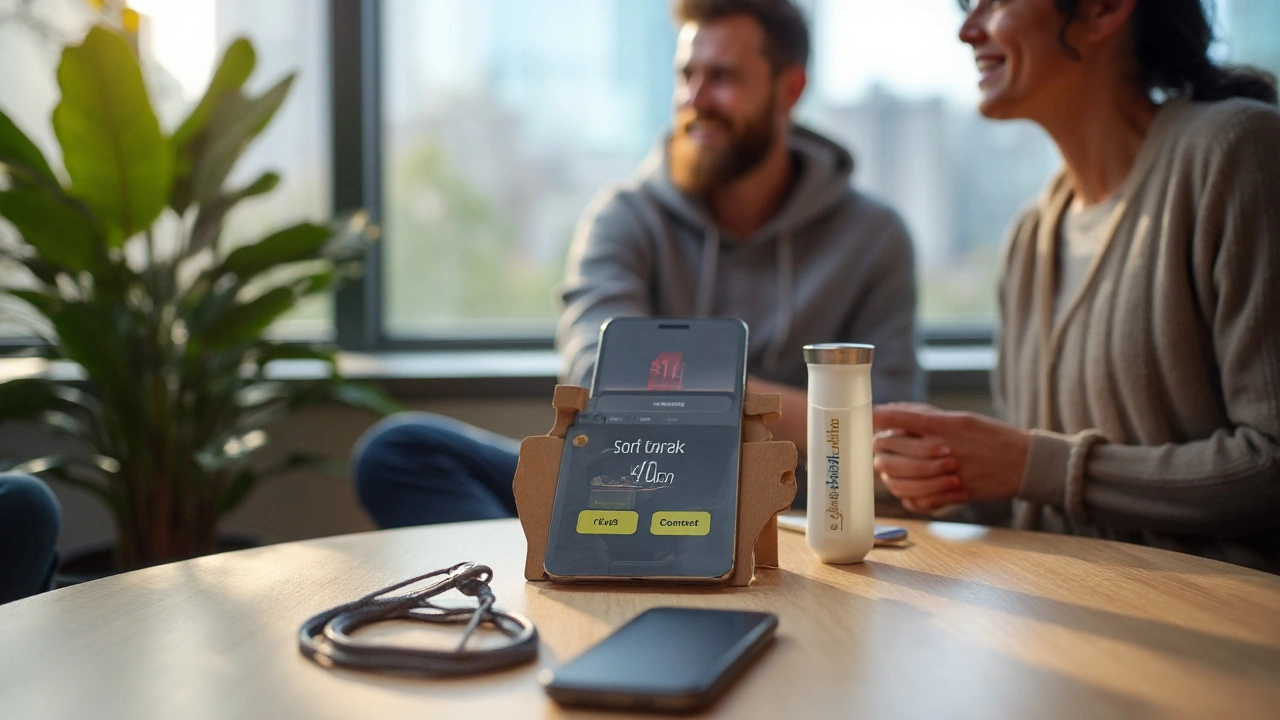
The practical toolkit: comparisons, checklists, FAQs, and next steps
Not sure when to pick massage vs a walk vs coffee? Use this quick comparison.
| Pick‑me‑up | Onset | Benefit window | Side effects | Best when |
|---|---|---|---|---|
| Chair massage (10-15 min) | Immediate to 15 min | 2-4 hours of smoother focus | Mild soreness possible | Tension, aches, mental fatigue |
| Coffee (1 cup) | 15-30 min | 2-5 hours | Jitters, sleep disruption | Short burst, no pain issues |
| Brisk walk (10 min) | Immediate | 1-2 hours | None | Stiffness + need sunlight/air |
| Breathwork (3-5 min) | 1-3 min | 1-2 hours | None | Stress spike, no time or budget |
| Power nap (10-20 min) | After nap | 2-4 hours | Sleep inertia if too long | Sleep debt, quiet space available |
Pre‑session checklist (60 seconds)
- Any red flags? Fever, flu, new injury, skin infection, or suspected DVT = skip.
- Have you eaten? Light meal or snack is fine. Heavy lunch? Wait 60-90 minutes.
- Clothes: remove dangly earrings, tie up long hair, loosen tight collars.
- Goal: pick one-wake up, ease neck, settle wrists. Tell your therapist.
Aftercare checklist
- Water: a glass does the job. No need for “detoxing.”
- Move: one minute of shoulder rolls and two slow nasal breaths.
- Work setup: raise your screen to eye level and bring the keyboard close.
- Note the win: did your pain drop or focus rise? Rebook the timing that worked.
Safety and contraindications
- Absolute no‑gos: fever, contagious skin conditions in the area, suspected DVT, active shingles, recent fracture, or new wound/surgery.
- Get medical clearance: pregnancy (especially first trimester), cancer treatment, uncontrolled hypertension, severe osteoporosis, or blood‑thinning meds.
- Modify: bruises easily? Ask for lighter, slower work. Neuropathy? Avoid numb areas to prevent overpressure.
How often is ideal?
- For everyday desk strain: 10-15 minutes once a week or fortnight.
- In crunch times (product launch, reporting): 10 minutes twice a week for 2-3 weeks; then taper.
- Budget‑savvy approach: alternate weeks of chair massage and DIY self‑work midday.
Manager’s mini‑rollout (fast and fair)
- Start small: one therapist, two hours, 10‑ or 15‑minute slots.
- Opt‑in sign‑up, no pressure. Keep a waitlist to fill gaps.
- Accessibility: offer a table option if someone can’t straddle a chair.
- Hygiene: fresh covers, hand hygiene, and a clear “skip if sick” policy.
- Measure: quick pulse survey on tension/focus before and after the pilot month.
Real‑world pitfalls to avoid
- The “too deep” trap: deep isn’t better midday. Aim mid‑pressure so you walk out awake, not woozy.
- Post‑lunch knocks: heavy meals blunt the effect. Book before lunch or keep lunch lighter.
- One‑and‑done thinking: gains stack with consistency, like gym time.
- Silent suffering: if a spot hurts in a weird or sharp way, say so. Good therapists adjust.
Mini‑FAQ
- Will I get sleepy after? Sometimes you’ll feel floaty for 5-10 minutes. A short walk and water usually flips you into a clean focus.
- Will it mess up hair or makeup? A little, but not much. Ask for minimal scalp work and use a fresh face cradle cover; bring a quick comb.
- What if I’m ticklish? Ask for slower, steadier pressure and more holds than fast strokes. That calms the tickle response.
- Is it safe in pregnancy? With clearance, yes-avoid strong pressure on certain points and focus on upper back and hands. Many therapists are trained in prenatal modifications.
- Can it help my headaches? Tension‑type headaches often ease when neck and jaw muscles relax. If you’ve got migraine patterns, keep things gentle and avoid triggers.
- What if I don’t like being touched? Try a self‑sequence, breathwork, a brisk walk, or a warm neck wrap. You can still fix the slump without touch.
Next steps you can take today
- Book a 10-15 minute slot this week and test “before lunch” vs “early afternoon.” Note which timing gives you the clearest lift.
- No therapist? Run the five‑minute self sequence after your most desk‑heavy morning meeting.
- Set a repeating calendar block: two Wednesdays a month for a chair session. Protect it like any other meeting.
- If you’re remote, build a DIY kit: massage ball, small towel, timer, and a reminder script.
Troubleshooting common scenarios
- I felt sore the next day: that can happen if pressure was high. Next time, ask for lighter pressure and more holds instead of deep stripping.
- I got dizzy standing up: breathe slowly before you get off the chair, then stand and pause. Low blood sugar? Have a small snack on hand.
- It helped, but the knots came back: pair your session with the 20‑8‑2 rule and move your screen to eye level. Tension is often a setup problem, not just a muscle problem.
- My boss needs ROI: offer a one‑month pilot. Track pre/post pain (0-10), perceived focus, and sick‑day trends. Keep it simple.
Bottom line: when the day is heaviest, a short, well‑timed chair session turns pain down and focus up without taxing your sleep or your nerves. It’s the kind of small, repeatable win that makes the afternoon feel doable-coffee optional.

